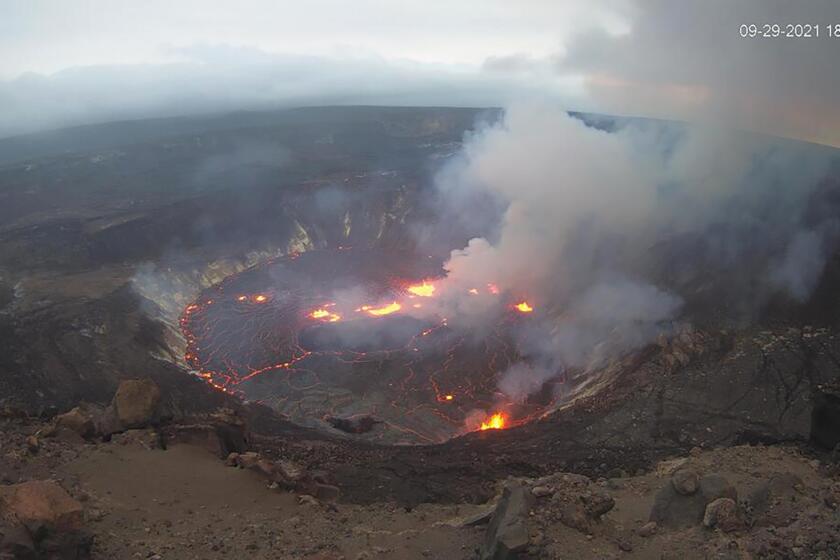Apodaca: Whether faced with our own or someone else’s, there are techniques for coping with anger

- Share via
When UC Irvine professor Raymond Novaco was a graduate student on his way to a PhD in psychology, he observed that much of the focus in his field was on depression and anxiety.
But he was driven to understand some other issues related to mental health that he believed were largely overlooked at the time. His decision to focus his research on anger, aggression and violence was also informed by his training in martial arts, through which he learned techniques for keeping a calm, controlled demeanor while defending himself.
Decades later, Novaco is the leading authority on anger whose work has significantly advanced the field. He is frequently credited with coining the term “anger management” and has focused primarily on assessing and treating people with serious disorders and histories of violence.
(No, the concept of “anger management” did not come from an extremely silly 2003 film with Adam Sandler and Jack Nicholson. It is a psycho-therapeutic program for anger prevention and control that has helped many real people in the real world.)
In my last column I discussed the apparent increase in anger in our society in the past few years — amid the pandemic and a politically divisive climate — as each day has brought news of fresh eruptions of rage and threatening behavior.
I included comments from Novaco, who explained that anger is a natural reaction when people believe they are under attack but that problems surface when anger is uncontrolled or disproportionate to the perceived danger — what he referred to as “dysregulated anger.”
But I wanted to know more, and so Novaco generously agreed to a second interview, this time to discuss the treatment and response side of the issue — in other words, what can be done when anger becomes dysregulated.
He immediately set me straight on one important point that, in hindsight, should have been obvious to me.
Learning to manage, or control, anger isn’t just about reacting to an angry outburst after it has spun out of control, when negativity fuels even more negativity, he noted. Rather, it’s crucial that people are taught how to prevent the outset of anger or “how not to get angry in the first place.”
Every day the news reports on outbreaks of angry and violent behavior throughout the country. What is causing this phenomenon?
One therapeutic goal is to help people understand that their anger often boils over because of the way they frame things in their minds. Some beliefs and attitudes can become exaggerated, and then even the smallest perceived slights might lead to amplified feelings and reactions.
It’s possible to teach people to identify possible triggers and help them reframe their cognitive processing so they aren’t according them so much importance.
Another key piece of effective therapy is a cost-benefit analysis, Novaco explained.
In fact, this is an important first step because in order to successfully treat dysregulated anger, the patient must be fully engaged and willing to change. And that willingness comes when they understand that the cost of their behavior is higher than whatever needs they believe are met from holding onto their anger.
“A simple thing a therapist would do is say, ‘How would your life be different if you didn’t get angry so much?’”
Another crucial piece to treating anger issues involves a difficult and delicate process of getting a patient to feel safe and comfortable discussing their anger and other related emotions — fear, sadness, feelings of abandonment or trauma, for instance.
When teaching patients coping skills, Novaco again draws on his knowledge of martial arts, as the breathing and systematic muscle relaxation techniques that are part of martial arts canon can aid in arousal reduction. He’s also a big advocate of meditation.
After patients have learned some coping skills, Novaco might take them through a progression of increasingly provocative situations so they can try out these techniques. It’s a long and potentially fraught process but one that can result in significant progress toward healthier responses.
Novaco also has some advice for regular people who find themselves on the receiving end of an angry, hostile outburst.
Personal safety, of course, is paramount, so if another person appears to be out of control and potentially violent, it is crucial to establish a safe buffer zone and know where exit routes are located, he said.
Beyond that, it’s important to project a sense of calm and control.
Do not use the word “anger,” he said.
“Most people who are really agitated can have some awareness at some level that they’re out of control. Don’t antagonize them further. Listen. It’s not important that you can correctly identify their emotional state. Say, ‘I can see you’re upset. Tell me what’s bothering you.’ Listen and repeat back what they said.”
The insight that Novaco offered, I thought, was a combination of professional expertise, extensive research, decades of experience and common sense. We’d all do well to pay heed to his wise counsel.
After all, the world could certainly do with a little less anger these days.
All the latest on Orange County from Orange County.
Get our free TimesOC newsletter.
You may occasionally receive promotional content from the Daily Pilot.





